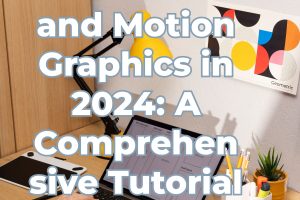
In 2024, the landscape of graphic design is rapidly evolving, thanks to advancements in Internet of Things (IoT) technology. This innovation isn’t just about creating aesthetically pleasing visuals but also enhancing functionality and interactivity in ways previously unimaginable. Whether you’re a seasoned graphic designer or just stepping into the field, understanding how IoT can revolutionize graphic solutions is crucial. In this blog post, we’ll explore what IoT means for graphic design, practical applications, benefits, and how you can leverage IoT to create cutting-edge designs.
Understanding IoT in Graphic Design
IoT refers to the interconnectedness of devices via the internet, enabling them to collect and exchange data. In graphic design, this translates to the integration of sensors, actuators, and smart devices into traditional design processes. Imagine a poster that changes based on environmental conditions or packaging that provides real-time product information – these are all possible with IoT.
Practical Applications of IoT in Graphic Design
- Dynamic Content Creation: IoT allows for dynamic content creation where graphics can adapt in real-time. For instance, digital signage that updates based on customer demographics or weather conditions.
- Interactive Experiences: By embedding sensors in designs, you can create interactive experiences. Think of a brochure that responds to touch or a business card that triggers a digital portfolio when tapped.
- Enhanced Print Media: IoT-enabled print media can offer augmented reality experiences through QR codes or embedded NFC tags. This adds layers of digital interaction to traditionally static mediums.
Benefits of Using IoT in Graphic Design
- Personalization: Tailoring designs based on user data leads to more personalized and engaging experiences.
- Data-Driven Insights: IoT-enabled designs can collect user interaction data, providing valuable insights for future campaigns.
- Sustainability: IoT can optimize resource usage in print runs by adjusting designs dynamically, reducing waste.
How to Implement IoT in Your Graphic Solutions
Now, let’s discuss how you can integrate IoT into your graphic design workflow:
- Educate Yourself: Stay updated on IoT trends and how they apply to design. Familiarize yourself with IoT platforms and tools relevant to graphic design applications.
- Collaborate Across Disciplines: Work closely with IoT developers and engineers to understand technical capabilities and constraints. Effective collaboration ensures seamless integration of IoT elements into your designs.
- Start Small, Scale Gradually: Begin with pilot projects or prototypes to test IoT integration. This allows you to refine your approach before scaling up to larger campaigns or projects.
- Focus on User Experience: Always prioritize user experience when incorporating IoT. Ensure that interactions are intuitive and add value to the overall design concept.
Challenges and Considerations
While IoT presents exciting opportunities for graphic designers, it also comes with challenges:
- Security: Ensure data security and privacy considerations are addressed when designing IoT-enabled graphics.
- Technical Complexity: IoT integration may require technical expertise beyond traditional graphic design skills.
- Cost: Implementing IoT can be costly, especially for small-scale projects.
Conclusion
As we move further into 2024, IoT continues to reshape graphic design by offering new avenues for creativity and functionality. By embracing IoT technologies, graphic designers can create innovative solutions that not only captivate audiences but also deliver measurable results. Whether you’re exploring IoT for the first time or looking to expand your skill set, understanding its potential in graphic design is key to staying ahead in an increasingly digital world. Start experimenting, collaborating, and innovating with IoT – your next groundbreaking design could be just a sensor away.
In conclusion, integrating IoT into graphic design isn’t just about adopting new technology; it’s about embracing a mindset that blends creativity with connectivity to redefine what’s possible in visual communication. As we look to the future, the fusion of IoT and graphic design promises to unlock endless possibilities for designers willing to explore and innovate.
Remember, the future of graphic design with IoT isn’t a distant dream – it’s a canvas waiting for your next masterpiece.
Featured Image Credit: Freepik






